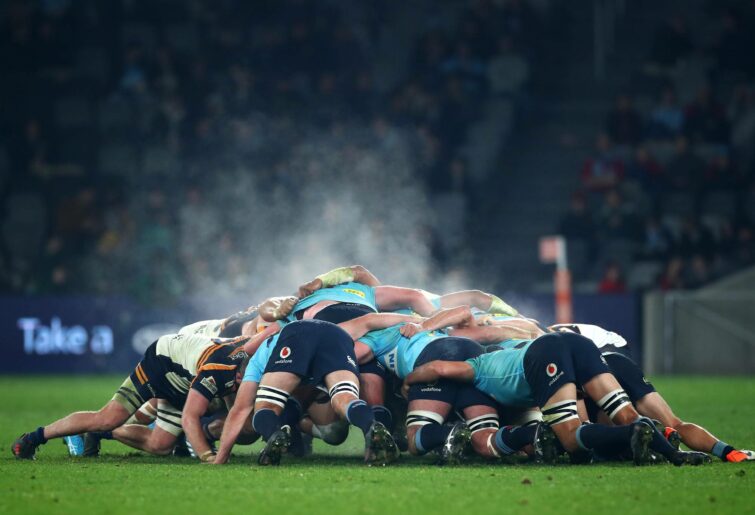Injury concern for Brumbies Blake Schoupp after scrum comes down awkwardly on top of him
Fortunately, the prop was back on his feet but it's likely he'll miss several weeks with that shoulder problem.
Opinion
If we can determine how long the ball is actually in play in professional rugby, when one cuts out the breaks in play, games are quite short.
I am going to use the Waratahs vs Brumbies match on the weekend, which NSW lost 25-31, for my example.
Factors that determine when the game starts include:
When is the ball not in play:
If one reviews a game on this basis, rugby is a stop-start affair.
In the first half of Saturday’s game, there were 26 sets where the ball was actually in play, for ten minutes and 23 seconds (give or take a few seconds). The longest sequences of play was between whistles 8:56 to 9.36 (1 min 40 sec).
There were a few more above a minute 24:27 (1 min 12 sec) and the game’s first minute and 21 seconds.
Most plays were in the vicinity of ten to 25 seconds.

Steam rises from a scrum (Photo by Cameron Spencer/Getty Images)
The second half was similar, with the longest sequence of play being at 77:55 – 80:30 (2 min 35 sec). There were 25 separate plays from a few seconds to 1 minute 19 second (48:52 – 49:31). Most were also in the vicinity of ten to 25 seconds.
The total time actually played in the second half was 14 minutes 18 seconds.
The remaining time saw the teams standing around for kicks, scrums and lineouts being set, collapsed.
One interesting statistic was that tries were scored when a team could hang onto the ball for more than one minute.
The Brumbies were better at hanging onto the ball for sequences above 20 seconds, especially in the second half.
The very low amount of actual game time must be of concern to rugby officials when they are competing with all other sports.
The sides’ coaches must be concerned that both teams struggle to keep the ball in play. How do you apply pressure if you can’t retain the ball for long periods?